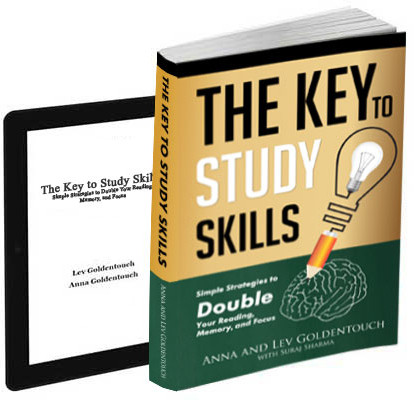As we approach summer, both parents and educators search for interesting activities to not only keep children engaged and entertained but also to help them continue learning and growing even during their school break. “Summer reading program ideas” are essential to avert the so-called “summer slide” caused by lack of practice in reading where children see their reading skills shrink. However, summer is not just a break from learning; on the contrary, it is the best time to arouse new interests and further comprehension skills in creative and enjoyable ways so that kids may acquire more.
Formulating a structured but interesting reading program will bestow on kids of any age the ability to retain or enhance their reading skills during summer. These activities, from reading about stories of adventure to making up stories, should create such a good feeling of literacy that the kids may start loving to read. In this piece, we will present 12 not only informative but also exciting and participative reading activities that are eye-catching and designed to help young participants enjoy the learning process and be better equipped for the next academic year.
Week 1: Launch into Summer Reading with Exploration
During the first week of the “summer reading program ideas,” there are some major things that should be done, i.e., igniting the fire of enthusiasm and making students eager to discover and explore the wonders of the world. The easiest way to get the ball rolling is by getting the children to draw up a list of all the leisure activities that they would like to do during the holidays, and most certainly, reading will be a part of that list. Kids should be motivated to scribble their reading targets on a piece of paper.—whatever it’s finishing a decided number of books or trying a new genre.
Creating a reading log or chart can be a pleasant way to show progress visually this summer. Moms, dads, and kids can brainstorm to create some colorful and interesting charts to keep them happy in their reading. They can also persuade the kids to take books of different genres, ranging from adventure stories to science books that fascinate them.
In addition, constructing a summer scrapbook can be an interesting way to add a creative twist to the program. This scrapbook can feature children’s drawings, pictures, or ticket stubs from the places they had visited during the summer and a glimpse of their experiences. Moreover, a “reading corner” equipped with comfy cushions and a lot of books, can be an extra factor that can make this summer reading activity enjoyable.
Week 2: Corresponding with Creativity
Urging the young ones to stay in contact with their friends and relations via the media for this summer brings with it the advantage of improving their writing and reading skills. This period, titled “Corresponding with Creativity”, discusses ways that children can intermingle correspondence with creativeness. The kids can write and read messages that their friends and family have sent via email, handwritten letters, or postcards, as the main idea is the interchange of ideas.
One interesting twist to the whole exercise is inviting pen pals or arranging to have a journal with exchange of friends or family. Moreover, the kids who prepare the stationery by themselves or the kids who design and create individual postcards would enjoy it while doing it. Writing to beloved authors and waiting excitedly for their replies, if they get any, is yet another way through which the students’ motivation can be boosted.
Furthermore, it should be known that this week’s program can go beyond the boundaries of just creating short stories that are inspired by the correspondence and messages sent and received. Should the kids embed storytelling in their correspondence, they would reap the benefits of more vivid and expressive skills.
Week 3: Tasting New Flavors of Reading
This is a good way to combine food and literature to enrich the reading experience. Children can discover the recipes from their favorite storybooks or even come up with their dishes with the book they have read as an inspiration. Notably, the preparation of butterbeer from the Harry Potter series and a tea party that is whimsical, brought to mind by Alice in Wonderland.
When you go to the library, look for cookbooks or food-related stories; you will pick up a lot of knowledge. Children can read recipes aloud, follow instructions, and prepare meals under parental supervision. As a memorable journey of summer reading, the kids can make a family recipe book where they write the dishes they have tried and their reviews of each.
This food-based approach to literacy not only solidifies their understanding of what they read but also allows kids to acquire practical skills like the ability to follow instructions, measure ingredients, and make predictions about how various flavors would work together.
Week 4: Exploring Different Worlds Through Travel Literature
Going on a holiday, or maybe just doing little trips in your area? Then, the fourth week is all about combining literature with real-life adventures. Researching various destinations, perusing through travel brochures, or getting lost in the pages of books where the settings are in faraway places can positively impact a kid’s knowledge of the world.
Request children to make a file of their travel itineraries, imagining that they are on a holiday, and then include descriptions of their places and things that they would see on the vacation. Taking the child on a world tour through books with diverse cultures and geographical settings, not only will they learn to appreciate diversity but also will they become more aware of the world we live in.
On the other hand, children might as well engage in writing their travel diaries and then illustrate and describe their best places. This particular exercise is instrumental in enhancing the writing skills and the imagination of a child.
Week 5: Immersing in Nature-Inspired Reading
In summer, there is no better time to go outside and enjoy the sun than to read under the sky. Reading aloud or silently is perfect for both of these activities in addition to the numerous outdoor activities being done. The main highlight of this week is to make reading the major of the nature elements with which the environment become. Help kids by reading books on animals, plants, or nature before going out to observe the environment. This. This is an excellent way to prepare them to be observant.
Similarly, a nature journal can be utilized to keep a record of findings. Kids can first sketch the picture of a flower, leaf, or insect they meet and then go through an online or printed guide to do the research and write brief descriptions. Also, the research skills of children can be enhanced by learning to use field guides or books about nature for something other than reading, as well as the above advantages.
Additionally, having a family picnic with storytelling and books can be one of the family bondings. Children are more likely to be connected and interested in reading if they associate reading with pleasure gained as a family activity and not with an obligation so they are part of the fun.
Week 6: Visiting Cultural and Historical Sites
The museums, zoos, and historical sites offer a vivid environment for the kids to experience learning. This season, attract the children to the reading materials in connection with the visits, such as learning about the history of the museum pieces or getting an idea about the animals in the zoo.
Kids are good at drawing their own illustrated guides or making brochures on the sites that they have visited, using the knowledge they have gained from books and observations. Incorporating storytelling activities where kids write about their experiences or invent stories based on the surroundings they are in can add a layer of creativity.
When you encourage children to talk about what they have read in books and to give examples from the real world, you are helping them to see the connection between text and context; thus, it is easier for them to comprehend and remember what they have read.
Week 7: Developing a Reading Adventure Theme
The realization of a theme that would run over the entire summer for the kids to delve into would enhance their reading and bring out the enthusiastic side of them. “Adventure-themed library programs” have been gaining immense popularity due to the availability of various similar events and children’s endless creativity and exploring abilities. You might like to design weekly reading challenges that introduce kids to quests, treasure hunts, or literary puzzles.
Kids may not only identify with themes like pirates, space exploration, or mystical creatures but also may dive deep into the world and become the character. Making their own adventure stories that contain maps and illustrations will make the activity even more engaging.
This teaching strategy works great with younger students; however, it can also be used with middle school children who need to be given the right kind of instruction.
Week 8: Nurturing Reading Habits Through Technology
The “summer reading program ideas” that are gotten from adding technology to the whole reading process make reading feel not only enjoyable but also easily accessible to children of any age. The presence of eBooks, audiobooks, and interactive reading apps in the technology world is so overwhelming that it can boost the reading culture exponentially.
Using apps aimed at boosting reading skills using various games and quizzes can turn out to be not only enjoyable but also educational. Children can listen to apps narrating the stories and at the same time, they follow the stories- the audio stories also make the experience engaging, and live to the story-telling. This way is particularly beneficial for children, who are auditory learners, or those who struggle with habitual reading methods.
Another new method can be creating a digital reading log, which is something children will love! Kids can use spreadsheets or online platforms on the computer to list their reading achievements, give stars to their best books, and write short reviews. At the time when they browse through their digital library and, in so doing, continue to fill it with new items, they will be able to see how time and experience have made them more enthusiastic and skillful readers.
Elementary school students who have a strong interest in technology are likely to gain lots of inspiration from building their blogs, on which they write and publish their reviews and thoughts about the books that they read. They can also be given free rein to come up with original texts, a move that can greatly help them in realizing their literary prowess. In this internet age, many tools are used that offer different ways of communicating that are more interactive and productive in improving literacy skills and reading as they transform it into a more engaging and modern activity.
Week 9: Celebrating Classic Literature with a Twist
Classic literature with a twist can be a very constructive way of presenting kids with themes in which they eventually develop strong and varied viewpoints. The traditional texts might be accepted by the youngsters if they are allowed to read them together with fun activities, but the readers must not challenge, otherwise, the texts could be assumed irrelevant and unfresh. Quite a few children get there!
One way of updating stories with creative writing exercises is very interesting. For instance, children can recreate well-known stories by changing the settings, characters, or plots. The futuristic world of the story of Alice in Wonderland and a young detective in a bustling, modern-day city are so the possibilities.
A different but equally thrilling pastime is analyzing the movie versions of classic books and comparing them to the original texts. Learning how to recognize differences and similarities can lead children to better their angle of looking at a problem and simultaneously improve their understanding of all narratives.
In line with this, we can also take the time to evaluate the graphic novel adaptation of these works. A visual storyline can make all the themes understandable and likable to children and will make them look deeper into literature by using it from a new viewpoint.
By providing the young people with the classics in their modern version, they not only get to work on their analytic abilities but also they are never bored. The new generation’s love for these types of stories can also be a gateway for them to gather the knowledge of the literary tradition and how it can still serve as a foundation for future narratives.
Week 10: Creating a Community of Readers
Another vital component of developing strong literacy skills in children is the encouragement of sharing their reading experiences with other people. The core of the week is to make young readers see the teamwork that reading-related activities can create and to encourage this in various forms.
Arranging book clubs is a great method to accomplish this. Book club settings, structured either in person or virtually, give children an opportunity to talk about the stories they read, swap opinions, and enhance their communication abilities. The book clubs may be designed in a specific manner, such as the “summer reading themes” club, which can result in an even more exciting experience.
Kids can explore reading challenges with their pals or their family, too. An example of this is to set up a gaming environment for reading the most interesting book or writing the most appealing book review relatively. If done in a friendly manner, this can also add the spice and enthusiasm of the reading.
Moreover, family reading nights are a great idea for the parents to set an example by showing children the right way to read and the importance of reading. A family where everyone is seen to be enjoying reading together makes the children feel that literacy is their most important yet also an enjoyable activity.
Developing a community of readers will help children move towards becoming great and enthusiastic readers.
Week 11: Introducing Interactive Storytelling
Interactive storytelling is an innovative and out-of-the-box way to get children involved in literature and stay in a much deeper conversation with it. This is a process of engagement that allows children to be part of the creation of the story rather than solely being the listeners.
‘Choose Your Adventure’ is the most popular method of interactive storytelling. Kids have the option to either read the pre-written stories in the interactive fiction format or to be the creators of the story by introducing different development paths for the characters whenever they make new decisions. Through this, children can grow more creative, and they can also develop their ability to think critically. Besides, one other advantage is that children get to operate the narrative themselves.
Creative and dramatic storytelling is one of the most exciting activities. Children can walk through the favorite scenes of the books, dressing nicely, bringing props, and reciting speech, and magically the characters come to life. This is an excellent method for the younger readers to form a connection between words and physical actions and expressions.
One of the many ways to create an interactive storytelling experience for kids is through the use of role-playing games, where they can come up with their characters and scenarios within a given framework. This very action facilitates the shared imaginative capacity that brings about the art of storytelling and makes it possible for children to work on their writing, speaking, and problem-solving skills.
Boys and girls are equipped with the potential to work out a story that is principally limited only by their powers of imagination. It is, for example, a certainty that integrating interactive storytelling into your “summer reading program ideas” is just a recipe for success. Moreover, it is more than enough to make children enjoy the stories.
Week 12: Wrapping Up the Summer with Reflection and Celebration
Just as summer is about to finish, it is necessary to look back at all the splendid experiences and the growth achieved through your “summer reading program ideas”. This final week is mainly focused on reflection, celebration, and even planning for the future.
If you suggest to children that they should go through their reading records, portfolios, or digital blogs, they can easily notice how productive they have been. In addition, talking about their most liked books, characters, or activities made during the summer period would give them a good impression of reading and motivate them in their literary adventure during the school year.
Celebrations may include throwing a themed reading party in which the children would be able to come dressed as characters from their favorite book and to share the books they love the most with their friends and family. One more idea is to prepare certificates or awards for various reading achievements like “Most Books Read” and “Best Storytelling.”
Looking back at the program’s wins and hurdles is another way to get useful information for the future. People can take this information and improve themselves, and be able to give the next summertime reading program the greatest level of commitment and the most successful outcome thus far.
On top of that, one can put into place a program for furthering the cause of these literacy activities beyond the school year, which will guarantee that kids stay interested and do not forget what they learned. By regularly reading and making that an activity that is not limited to the summer, kids can only but grow in their ability to read, write, and think logically.

Get 4 Free Sample Chapters of the Key To Study Book
Get access to advanced training, and a selection of free apps to train your reading speed and visual memory

